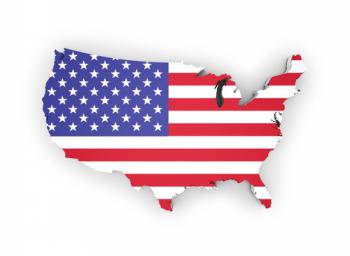William Paterson
 Founding Father: William Paterson
Founding Father: William Paterson
William Paterson was born in County Antrim, Ireland, in on December 14, 1745. When he was almost 2 years old, his family moved from Ireland to America. While his father traveled around the country, selling tin products, William Paterson’s family lived in New London, other areas of Connecticut, and Trenton, New Jersey. In 1750, William Paterson settled in Princeton, NJ. There, William Paterson became a manufacturer of tin goods and a merchant. William Paterson’s wealth allowed him to go to local private schools and then the College of New Jersey. He received his Bachelor of Arts in 1763 and Master of Arts 3 years later.
Afterwards, Paterson studied law under Richard Stockton, who signed the Declaration of Independence, in the city of Princeton. Soon after, William Paterson began practicing law at New Bromley, in Hunterdon County. Afterwards, William Paterson moved to South Branch, which was in Somerset County, and then relocated near New Brunswick at Raritan estate in 1779.
When the Revolutionary War broke out, William Paterson joined the New Jersey patriots’ vanguard. He also served in the provincial congress between 1775 and 1776, the constitutional convention in 1776, the legislative council from 1776 to 1777, and the council of safety in 1777. During the last year, William Paterson also held a militia commission. Between 1776 and 1783, William Paterson was attorney general of New Jersey, a job that took up so much time that he could not accept his election in 1780 to the Continental Congress. Meantime, the previous year, William Paterson had married Cornelia Bell, and he had three children with her before her death in 1783. Two years later, William Paterson got remarried to Euphemia White.
From 1783, when William Paterson moved to New Brunswick, New Jersey, until 1787, he devoted a lot of his time and energy in law and did not enter the public spotlight. Afterwards, he was chosen to be the representative of New Jersey at the Constitutional Convention. He only acted as New Jersey’s representative until late July of that year. Until then, William Paterson took careful notes of all the proceedings. More importantly, William Paterson was very prominent because of his support and co-authorship of the New Jersey Plan, sometimes called the Paterson Plan, which stated the small states’ rights against the large. William Paterson only returned to the Constitutional Convention to sign the Constitution. After supporting the ratification of the Constitution in New Jersey, William Paterson started his career in the new American government.
In 1789, William Paterson was elected to the United States Senate between 1789 and 1790, where he played an important role in writing the Judiciary Act of 1789. William Paterson’s next position after being a judge was the governor of his New Jersey from 1790 to 1793. Here, he started writing what later became the volume called Laws of the State of New Jersey in 1800. He also started to revise the practices and rules of the common law courts and chancery.Between 1793 and 1806, William Paterson served the United States Supreme Court as an associate Justice. At that time, federal judges had to ride the circuit, or travel around. Here William Paterson travelled with the full court to preside over many major trials.
In September 1806, 60 year old Paterson began travelling Ballston Spa, New York for a cure to his sickness, but he died before he could get there at his daughter’s home in Albany, New York. William Paterson was buried in the nearby Van Rensselaer family vault, but his body was later moved to the Albany Rural Cemetery, in Menands, New York.
Fun Facts about William Paterson
• Both William Paterson University and the town Paterson, New Jersey are both named after William Paterson.• He is currently buried in the same cemetery as President Chester A. Arthur.
Related Topics
- Article 5
- Hazelwood v. Kuhlmeier
- James Wilson
- Eighth Amendment
- A Quick Guide to John Witherspoon
- Perry v. Schwarzenegger
- Bush V. Gore
- Patrick Henry
- Gitlow v. New York
- Eleventh Amendment